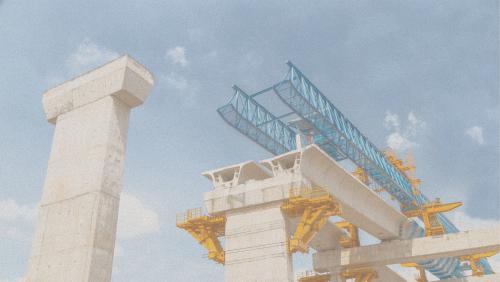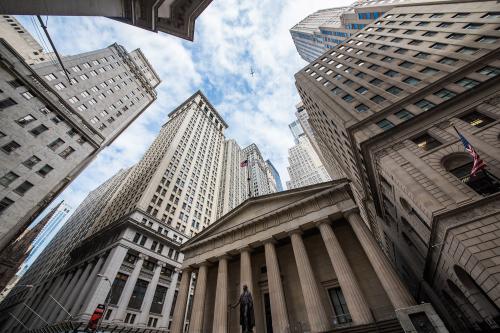President Biden has outlined a sweeping infrastructure plan that aims to address both historic needs—like bridges, tunnels, and roads—and modern challenges from climate change and digitalization. Adie Tomer, a fellow in the Metropolitan Policy Program at Brookings, argues that this type of investment would create good paying jobs, improve equity, and make American businesses more globally competitive. Tomer joins David Dollar in this episode to discuss the potential of a major infrastructure investment before turning to the politics of passing Biden’s $2.3 trillion plan and how to pay for it.
Transcript
DAVID DOLLAR: Hi, I’m David Dollar, host of the Brookings trade podcast Dollar and Sense. This is infrastructure week for our podcast. President Biden has proposed more than $2 trillion of new spending to address a variety of weaknesses in infrastructure. That includes traditional things like roads, bridges, and water pipes, but we also have a lot of new needs because of the changing world. So joining me is Adie Tomer, a Brookings fellow who leads the Metropolitan Infrastructure Initiative here. We are going to dive into these infrastructure issues. So, welcome to the show.
ADIE TOMER: Always nice to be with you, David. Thanks for having me.
DOLLAR: So in terms of new issues, let’s start with climate resilience. This is a big theme in President Biden’s proposal. What do we need to do with infrastructure to mitigate and adapt to climate change? What is in President Biden’s proposal?
TOMER: Yeah, this is the place to start. Where our infrastructure debate was even back when Obama first went into office and we were debating what should be in the American Recovery Act—[there is] a really different national tone around this. I’ve got some numbers for you and for other folks to kind of put in perspective why this matters so much.
In the 1980s, we had 2.9 natural disasters per year. Each one on average cost $17.8 billion. By the 2010s, we were seeing 12 a year—so a six-times increase—and the average annual cost went up to $81 billion. So it’s actually more like a five-times increase, right? These acute climate shocks are significant, but what they mask is actually the even more threatening chronic climate shocks that we see.







Commentary
PodcastA new vision for American infrastructure
May 10, 2021